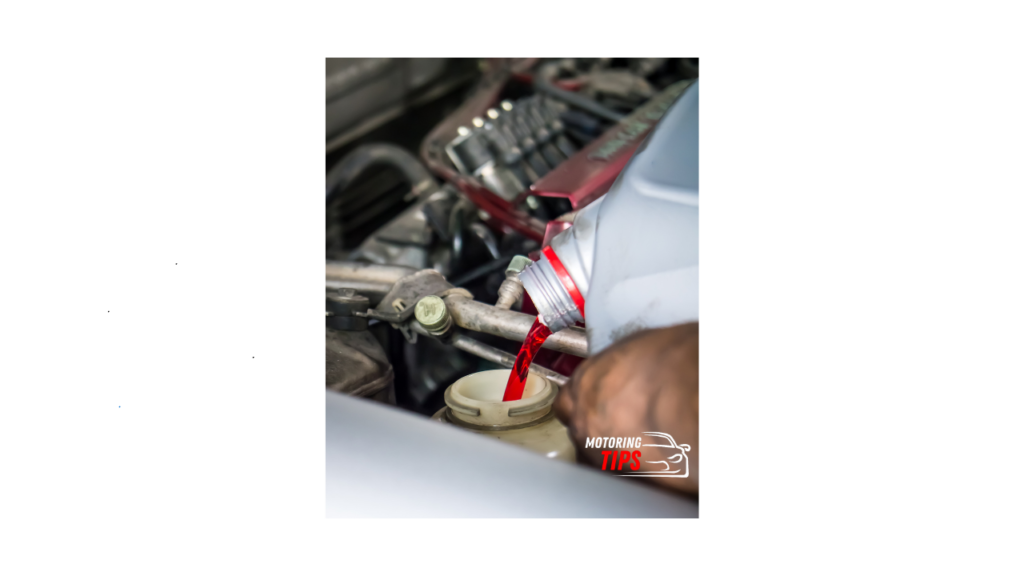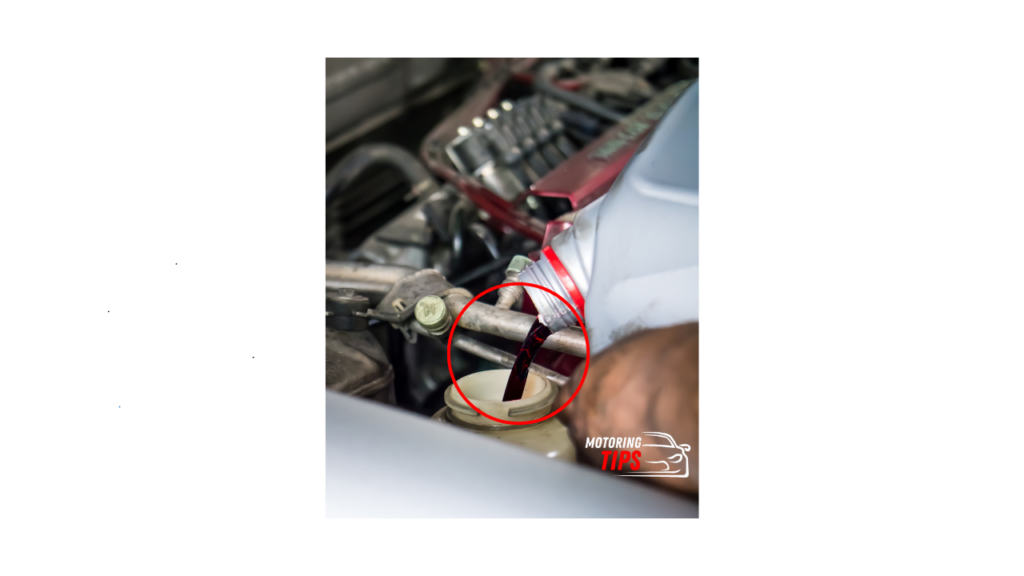Transmission fluid color typically ranges from bright red to dark brown. Fresh fluid is bright red, indicating it’s in good condition. As it ages, it may darken to dark red or even brick red, which is normal after some use. If the fluid turns dark brown or black, that signals serious issues that need immediate attention. A pink hue can indicate coolant contamination, which requires urgent inspection. Regularly checking your fluid color can help maintain your vehicle’s performance and catch problems early. Keep an eye on your transmission fluid to avoid costly repairs down the line.
Table of Contents
Key Takeaways
- Fresh transmission fluid is bright red, indicating good health and functionality for the vehicle’s transmission system.
- As the fluid ages, it may turn dark red or brick red, which is still acceptable but requires monitoring.
- Dark blood red or rust red fluid suggests impending maintenance is needed to prevent issues.
- Burnt red or dark brown fluid indicates severe degradation and overheating; an immediate fluid change is necessary.
- Pink or orange fluid signals potential coolant contamination, requiring urgent professional inspection and service.
What Color Should Transmission Fluid Be?

In regard to transmission fluid, its color is crucial for evaluating its health. Fresh transmission fluid typically appears bright red or dark red, indicating it’s healthy and functional.
When you check transmission fluid and notice it has darkened to a deep blood red or rust red, it means maintenance should be scheduled soon. This color change suggests that the fluid is aging or becoming contaminated, and you’ll want to keep an eye on it.
If you find dark brown or almost black fluid, that’s a sign of severe degradation. At this point, the fluid needs to be changed immediately to prevent potential transmission damage.
A pink hue is especially concerning, as it indicates coolant contamination, which necessitates urgent professional inspection.
Regularly checking the color of your transmission fluid can help you avoid expensive repairs and keep your vehicle running smoothly. If you notice any unusual colors, don’t ignore them.
Whether you’re checking for leaks or just maintaining your car, being proactive about your transmission fluid color is key to ensuring its longevity and performance.
Bad Transmission Fluid Colors

Observing the color of your transmission fluid can reveal potential problems, particularly when it shifts to darker shades. A fresh transmission fluid color is bright red, indicating it’s in good condition.
However, as it ages, it can change to dark brick red, which is still acceptable but requires regular monitoring. If you notice a dark blood red or rust red hue, it’s a warning sign that you might need to schedule a service appointment soon.
The most concerning color change is to a burnt red or dark brown. These shades indicate significant degradation and overheating, suggesting that your fluid has been contaminated or oxidized.
If you encounter burnt red fluid, it’s important to act quickly as this signals vital issues that could lead to severe transmission damage. In such cases, an immediate fluid change is necessary to prevent further complications.
Regularly checking your transmission fluid color is essential for maintaining your vehicle’s health. By staying vigilant, you can catch potential problems early and keep your transmission running smoothly for years to come.
Signs of Fluid Replacement Need
Noticing changes in your transmission fluid can help you identify when it’s time for a replacement. Keeping an eye on your transmission fluid color is vital. If you notice a burnt smell, it’s a clear sign of overheating, and you should schedule a fluid change immediately to avoid further damage. If the fluid appears oily or thick, it suggests contamination, making replacement necessary for proper lubrication.
Additionally, look for any visible fluid leaks beneath your vehicle. These leaks can indicate low transmission fluid levels, prompting a need for inspection and possible transmission service. If you experience hesitation or difficulty shifting gears, it may signal that the transmission fluid is degraded and in need of replacement.
Here’s a quick reference table to help you identify signs of fluid replacement:
| Transmission Fluid Condition | Significance | Action Needed |
|---|---|---|
| Bright Red | Healthy fluid | No action needed |
| Dark Brown/Black | Oxidation and overheating | Immediate fluid change |
| Oily and Thick | Contamination | Replace fluid |
Transmission Fluid Color Guide
Understanding the color of your transmission fluid is crucial to maintaining your vehicle’s performance. Regularly checking the fluid’s color can help you identify potential transmission issues before they escalate.
Here’s a quick guide to the different transmission fluid colors you should be aware of:
- Bright Red: This indicates brand-new transmission fluid, fresh and ready for action.
- Dark Red: This is normal transmission fluid, darker but still healthy after several thousand miles of use.
- Deep Blood Red: This signals that the fluid should be replaced soon to prevent potential transmission issues.
If you notice that your transmission fluid has turned burnt red or even black, it’s time to act.
These colors suggest significant oxidation and overheating, which may lead to costly repairs if not addressed promptly.
Keeping an eye on your transmission fluid color allows you to catch problems early and maintain your vehicle’s health.
Regular checks can save you from severe damage, ensuring your ride stays smooth and reliable.
Don’t underestimate the importance of transmission fluid color; it’s a crucial part of your car’s maintenance routine.
Understanding Transmission Fluid
Transmission fluid plays an essential role in your vehicle’s performance, acting as a lubricant and coolant for the transmission system. Understanding transmission fluid colors can help you assess its condition and functionality. Fresh transmission fluid is typically bright red or dark red, indicating it’s ready for use.
As it ages, the color may shift to dark brick red, which suggests normal wear and that it’s still functioning well. However, if you notice dark blood red or rust red fluid, it might be time to schedule a service appointment. This color change can indicate potential issues that require your attention.
On the other hand, burnt red or almost black transmission fluid signals critical problems, demanding immediate action to prevent extensive damage to your vehicle. Regularly checking the transmission fluid color can assist you in maintaining the health of your transmission system.
Importance of Healthy Transmission Fluid
Maintaining healthy transmission fluid is essential for your vehicle’s performance and longevity. This significant fluid not only lubricates and cools internal transmission components but also prevents excessive wear and overheating.
Regular maintenance of your transmission fluid is imperative, as it helps to identify potential issues before they escalate into costly repairs.
Here are three reasons why keeping your transmission fluid in top shape matters:
- Optimal Lubrication: Healthy transmission fluid guarantees smooth operation, reducing friction between gears.
- Temperature Control: It helps keep your transmission components cool, preventing overheating that can lead to failure.
- Performance Maintenance: Fresh, bright red transmission fluid indicates good condition, while darkened fluid warns of contamination, signaling the need for immediate maintenance.
Color Meanings of Transmission Fluid
The color of your transmission fluid reveals a lot about its condition and the health of your vehicle’s transmission system. By regularly checking the fluid color, you can catch potential issues before they escalate. Here’s a quick guide to what different transmission fluid colors mean:
Here is an easy-to-follow colour guide for health to unhealthy transmission fluid for you to follow.

| Transmission Fluid Color | Meaning |
|---|---|
| Bright Red | Fresh and uncontaminated |
| Dark Brick Red | Normal wear, monitor closely |
| Deep Blood Red | Service needed soon |
| Burnt Red/Black | Immediate attention required |
| Pink | Contamination, needs urgent check |
If you notice your transmission fluid is a deep blood red, it indicates that service is needed soon, as this color often suggests the fluid is degrading. On the other hand, if the fluid appears burnt red or almost black, it’s a critical warning sign that serious problems may arise, so you’ll want to seek immediate attention from a technician. Keep an eye on your transmission fluid color; it’s your first line of defense against potential transmission issues.
How to Address Fluid Issues
Your vehicle’s well-being hinges on promptly addressing transmission fluid issues. Regular monitoring of your transmission fluid color is vital for maintaining your car’s performance. Here’s what to look for:
- Bright Red Fluid: This indicates fresh, healthy transmission fluid. No action is needed, but keep checking regularly.
- Pink or Orange Fluid: This suggests potential coolant contamination, requiring immediate attention. Schedule a service appointment to diagnose the issue.
- Dark Brown or Black Fluid: This signals significant oxidation and overheating. You must change the fluid without delay to prevent serious transmission damage.
If you notice a fluid leak, especially red fluid pooling under your vehicle, it’s important to address it. A leak often indicates a more significant problem that needs professional diagnosis and repair.
Additionally, if you detect a burnt smell or oily consistency, don’t ignore it; a transmission change is necessary to avoid costly repairs later.
Maintaining Transmission Health
How can you secure the longevity of your transmission system? The key lies in maintaining your transmission fluid’s health.
Start by regularly checking the transmission fluid color. Fresh fluid is bright red, while dark red indicates it’s aging. If you see burnt or almost black fluid, it’s time for immediate attention to prevent serious damage. Use a clean white sheet to accurately assess the fluid’s color and spot issues early on.
In addition to color, monitor for unusual odors, like a burnt smell, which can signal overheating. Establish a consistent service schedule based on your vehicle’s owner’s manual to guarantee timely fluid changes. This proactive approach will help you avoid costly repairs down the line.
When you do need to change your fluid, always use genuine OEM parts. These parts secure compatibility and peak performance for your transmission system, guaranteeing that it runs smoothly.
Common Transmission Fluid Questions
Maintaining the health of your transmission fluid is key, and you might’ve some questions about it. Here are some common concerns you might have:
- What does the color of my transmission fluid mean? Fresh transmission fluid color is bright red, while a dark brick red indicates normal wear. If it turns burnt red or black, it’s a sign of critical problems.
- How can I tell if I’ve a transmission leak? If you notice red fluid leaking underneath your vehicle, it could indicate a transmission leak. It’s essential to check your transmission fluid regularly to catch any issues early.
- When do I need to change my transmission fluid? If you spot a bad transmission fluid color—like dark brown or black—it’s time for a change.
Regularly monitoring your fluid can prevent extensive damage and save you from needing a transmission replacement.
Frequently Asked Questions
What Color Is Bad Transmission Fluid?
When you notice transmission fluid that’s dark brown, black, or burnt red, it’s a sign of trouble. These colors indicate oxidation or overheating, so you should get it checked immediately to prevent further damage.
What Color Is a Transmission Fluid Leak?
If you spot a transmission fluid leak, check its color. Healthy fluid’s typically red or dark red. If it’s brown, black, or pink, it suggests contamination or overheating, so you should seek professional help immediately.
Does Transmission Fluid Look Like Oil?
Transmission fluid doesn’t look like oil. It’s typically bright red or dark red, while oil appears darker, usually brown or black. You can easily differentiate them by color and consistency when checking your vehicle.
Is Transmission Fluid Red or Clear?
Transmission fluid’s color can vary. While it’s typically red, some manufacturers use other colors. If you notice clear fluid, it might indicate contamination or improper fluid type, so you should get it checked immediately.






